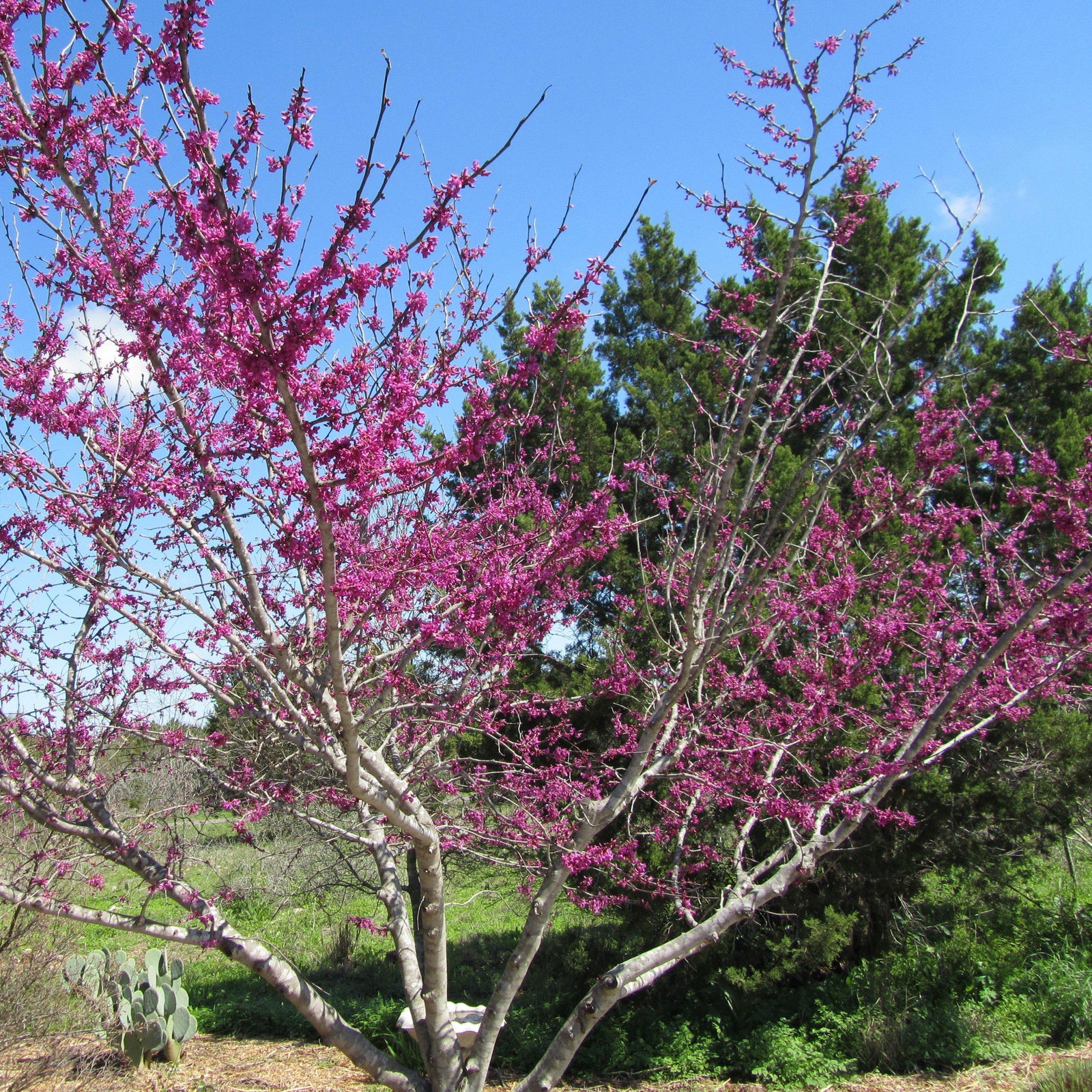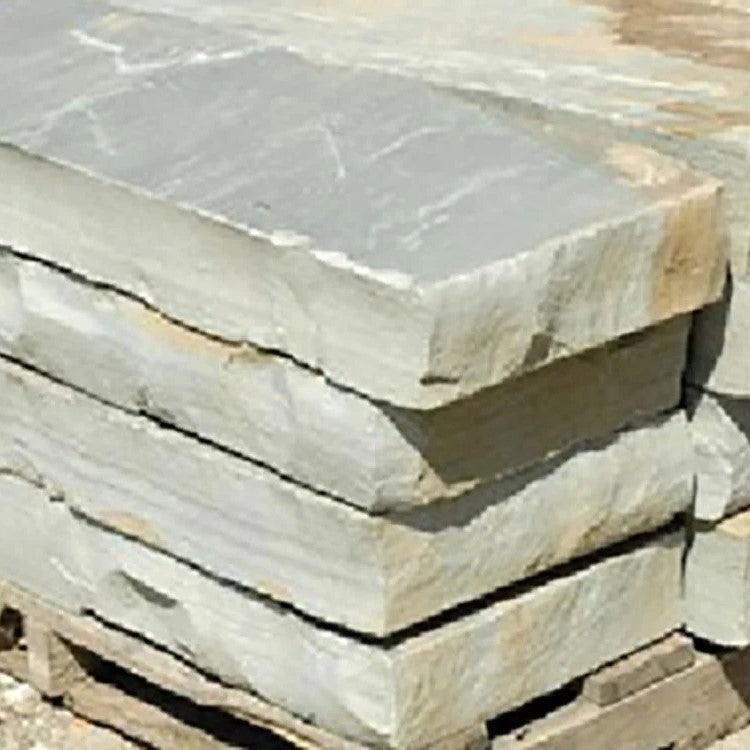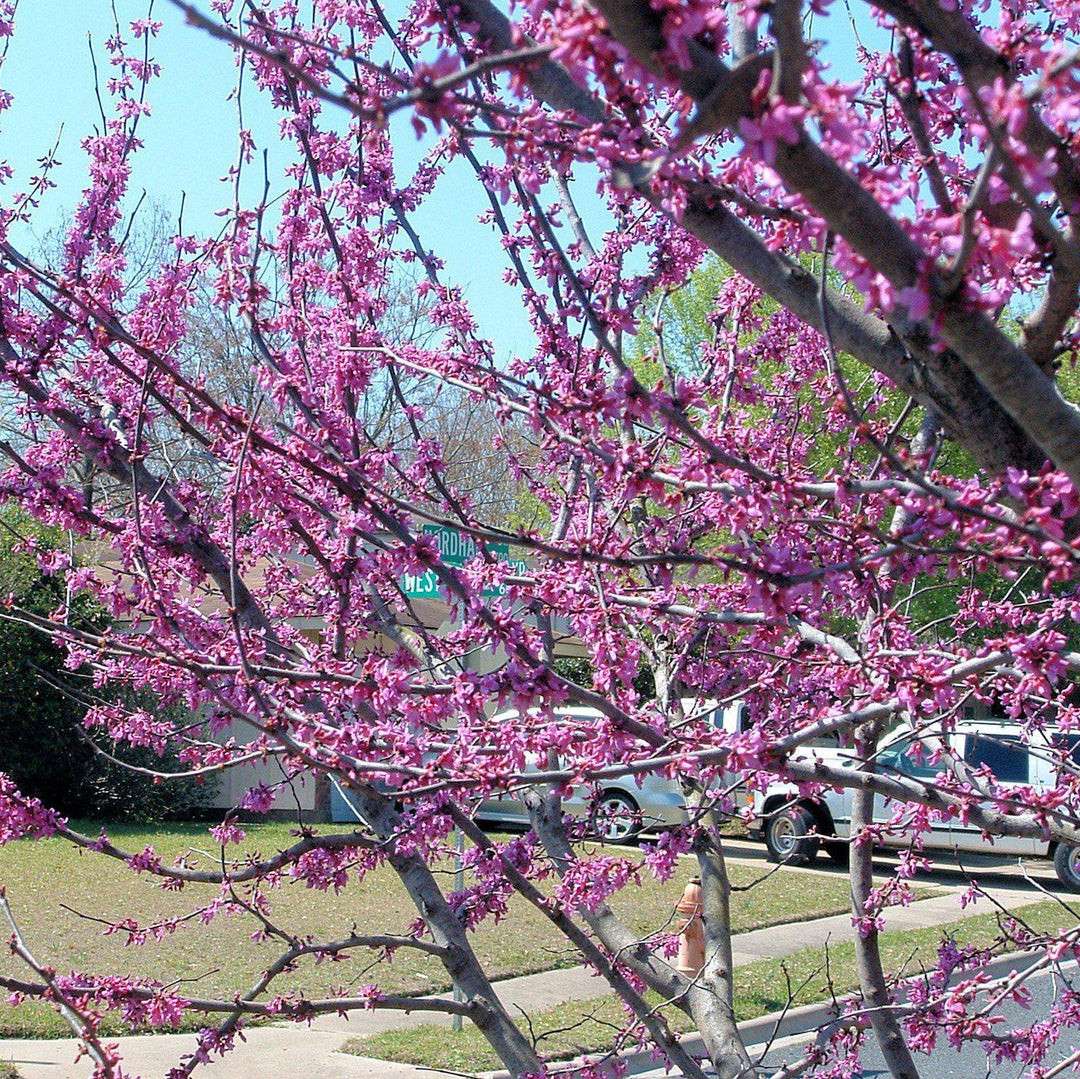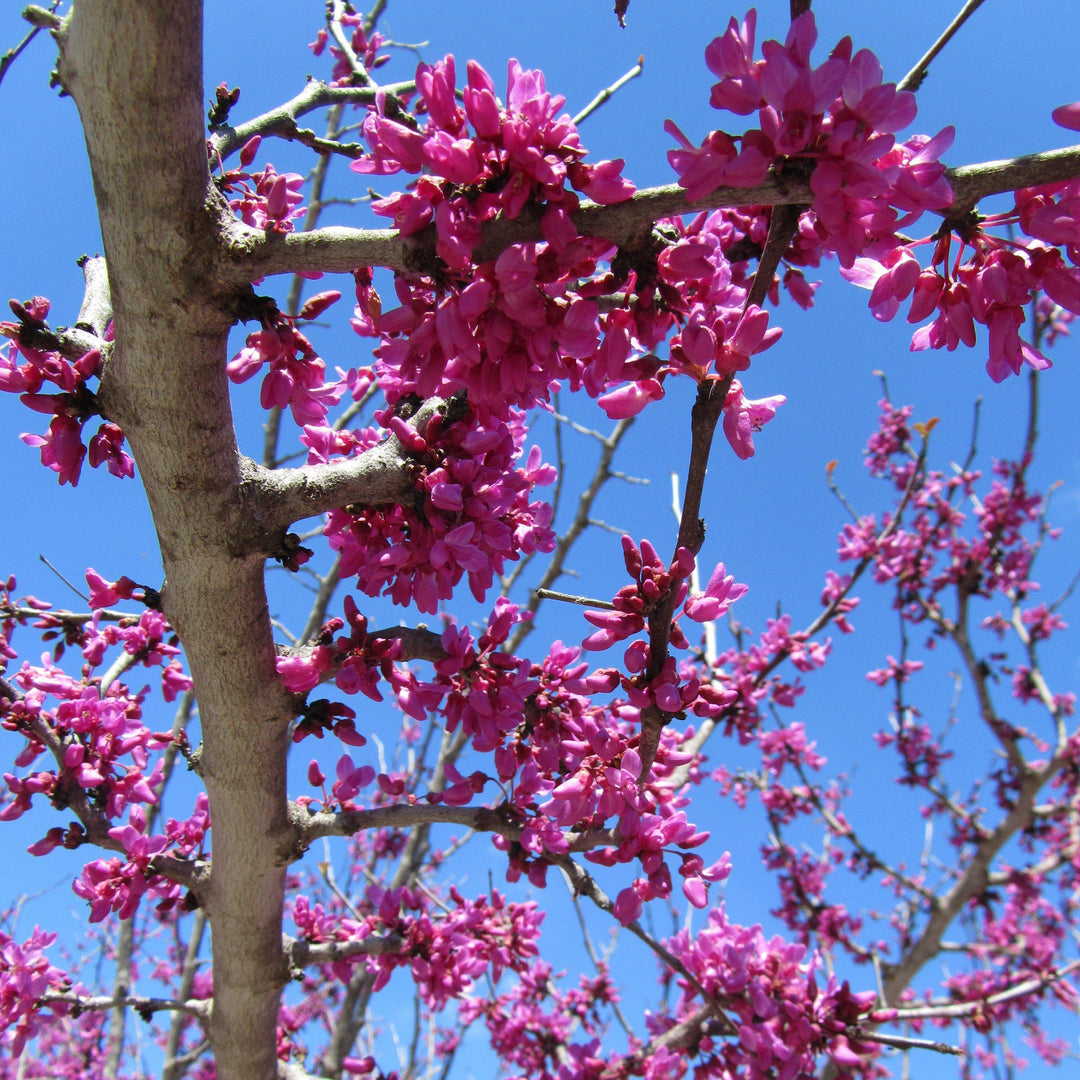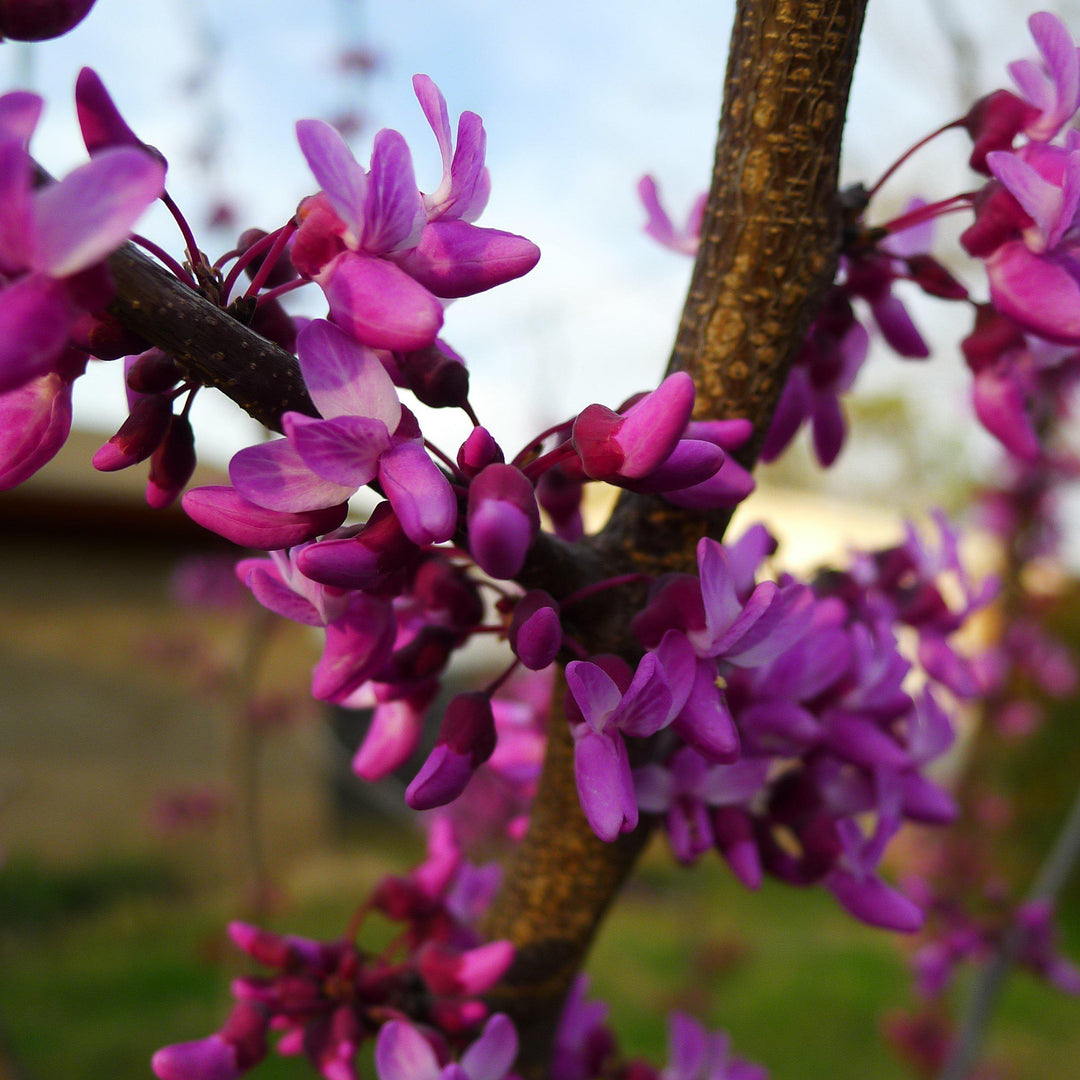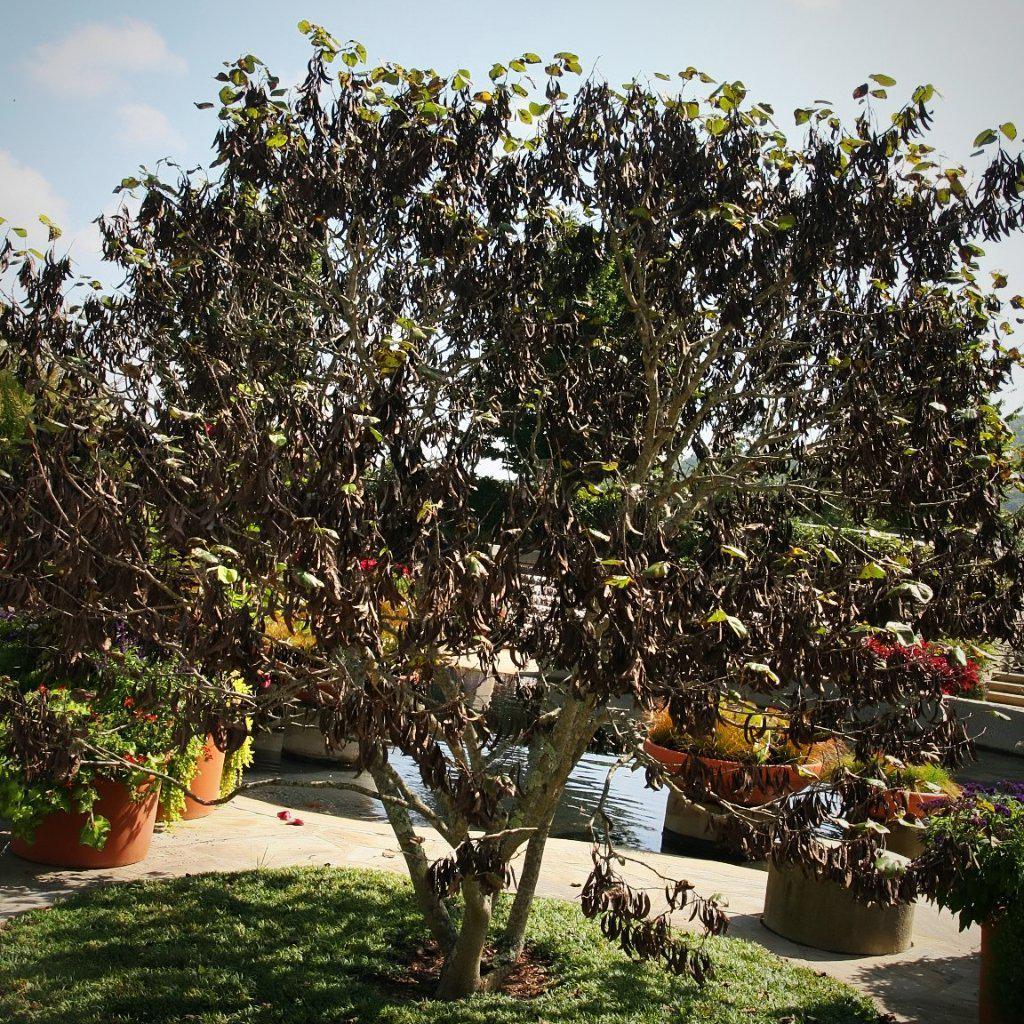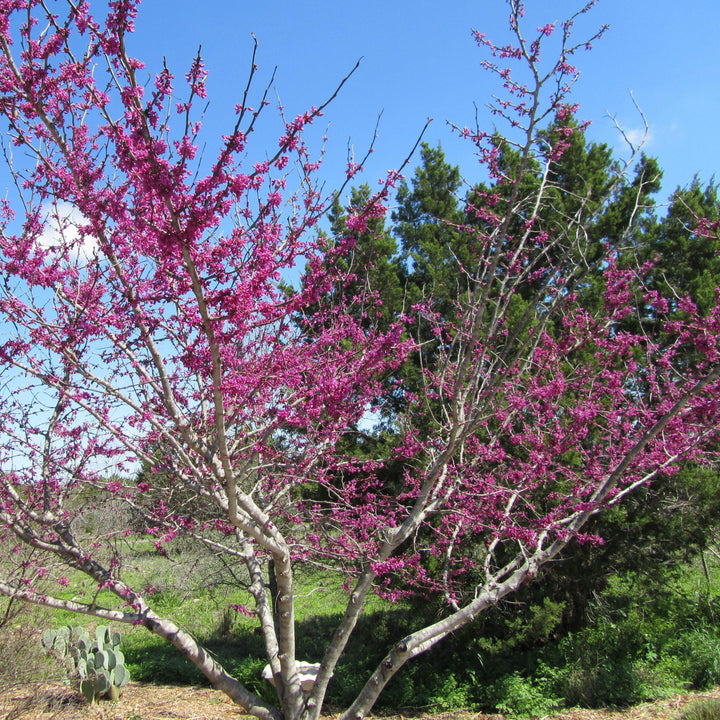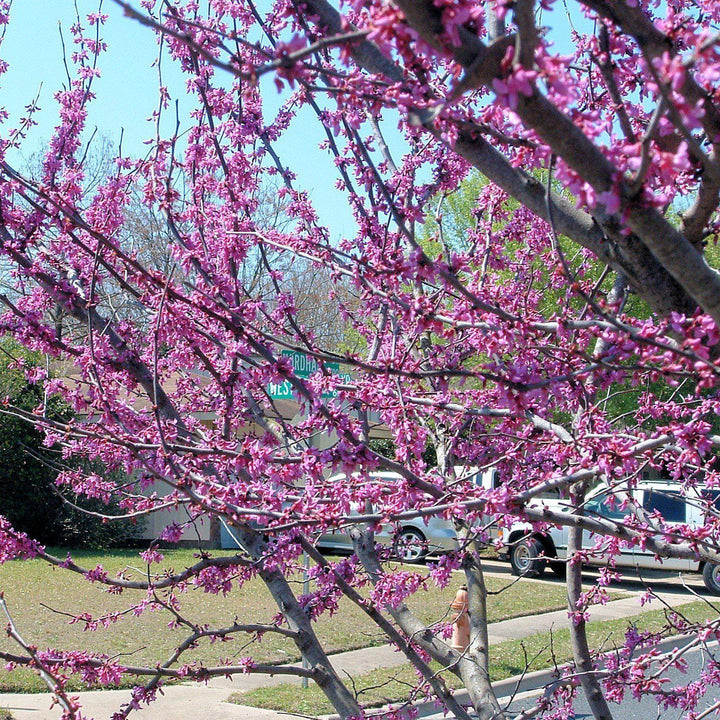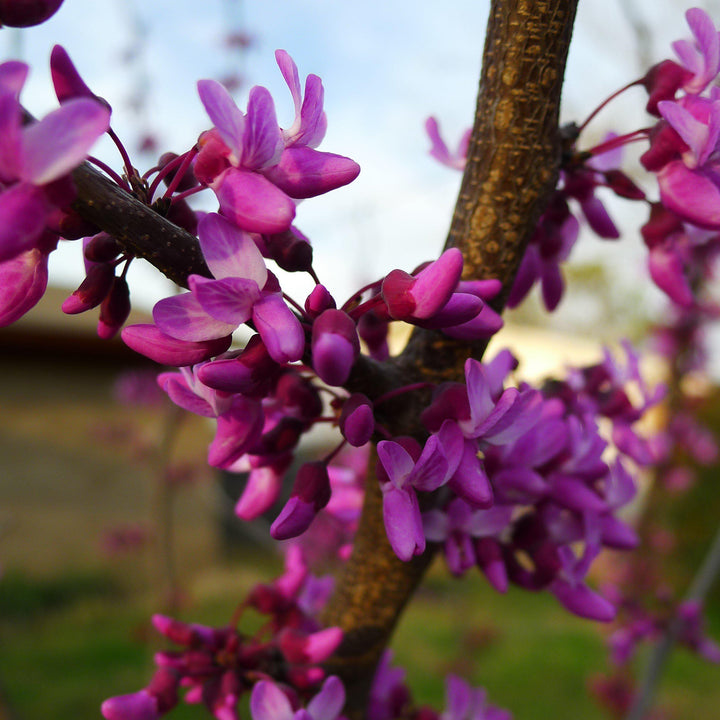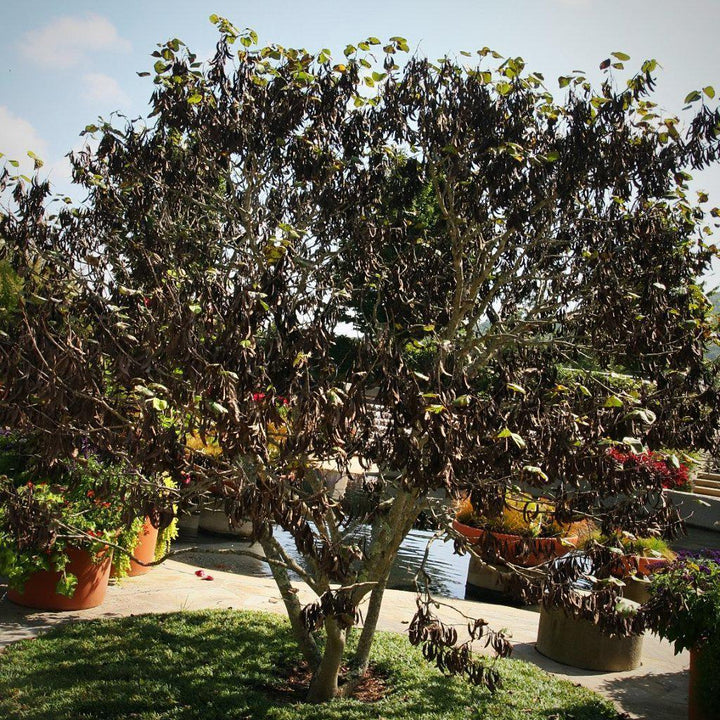The Texas Redbud typically grows to a height of 15 to 20 feet (4.5 to 6 meters) with a spread of 15 to 25 feet (4.5 to 7.5 meters). It has a rounded shape and its branches are adorned with clusters of small, pea-like flowers in early spring. These flowers create a stunning display of color and attract pollinators like bees and butterflies.
The heart-shaped leaves of the Texas Redbud emerge after the flowers and are a vibrant green color. In the fall, the foliage can turn yellow or even shades of orange and red, adding to its seasonal appeal.
This tree thrives in full sun to partial shade and prefers well-draining soil. It is relatively low-maintenance and can tolerate a range of soil conditions, including clay and sandy soils. Regular watering is important, especially during dry periods, to help the tree establish and maintain its health.
|
Type: |
|
|
Origins: |
Central N. America, and Mexico |
|
Height: |
25’ - 30’ |
|
Spread: |
15’ - 25’ |
|
Spacing: |
20’ |
|
USDA Hardiness Zone: |
6 - 9 |
|
Culture: |
|
|
Bloom Color: |
Purple |
|
Season of Interest: |
MAINTENANCE NEEDS: Low maintenance. Canker can be a significant disease problem. Various diseases and pests and be prevented with regular watering and pruning of dead branches. Does not transplant well, plant when young and leave undisturbed.
LANDSCAPE USES: Specimen or mass plantings, Borders, Naturalized Areas, Woodland Garden, Wildlife Gardens, Screening, Shade Tree, and Street Tree.
COMPANION PLANTS: Mahonia, Hydrangea, Witch Hazel
IMAGES: Photoset by sfbaywalk, Texas Redbud (1)+(2), (2) Photo by micklpickl, redbud and Nordham Dr , (3) Photo by 3w4v, Texas Redbud, (4) Photo by David J. Stang, Cercis canadensis texensis 3zz, CC BY-SA 4.0
*As plants have ranges in appearance they may not appear as the images shown.


